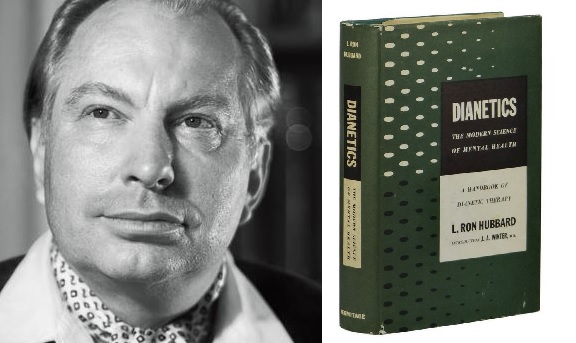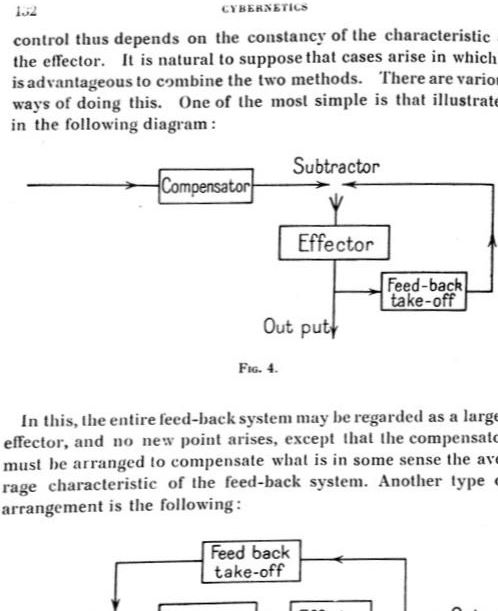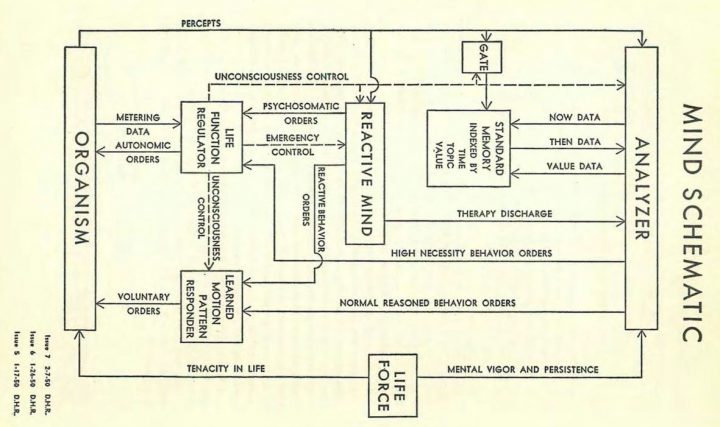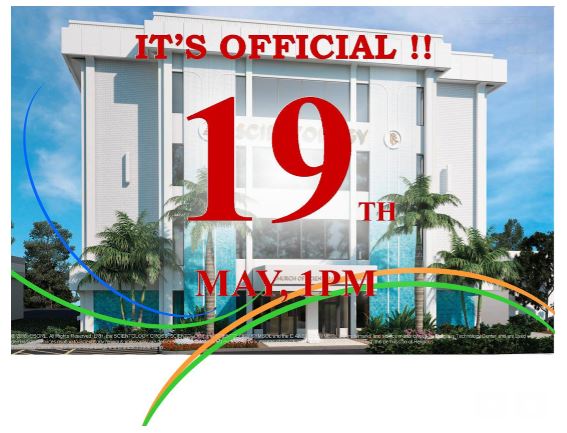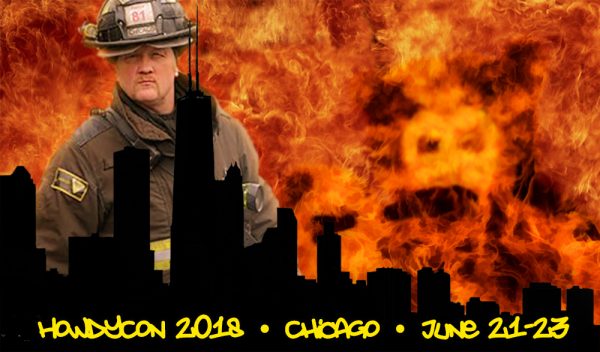Over the last two days, we’ve seen some fascinating letters made public for the first time which were written by Donald H. Rogers, an eyewitness to the earliest days of Dianetics. Rogers wrote the letters in 1984-85 to Jon Atack, who was researching his book, A Piece of Blue Sky, and who generously shared the letters with us.
In his letters, Rogers covered a lot of territory regarding L. Ron Hubbard, Dianetics, and the early Scientology movement, and we asked a couple of people for their thoughts on them. We were glad to hear back from Chris Shelton, and we also received some observations from Alec Nevala-Lee, author of the upcoming book Astounding: John W. Campbell, Isaac Asimov, Robert A. Heinlein, L. Ron Hubbard, and the Golden Age of Science Fiction, which will be released by HarperCollins on October 23. One of the subjects that Alec covers in the book is how much Hubbard’s famous book Dianetics was really a group project, and what contributions his editor Campbell made to it. He tells us he can also see that group dynamic working when he looked at the letters of Don Rogers…
Alec Nevala-Lee: When I read these letters, I was reminded of a fascinating detail in the “Affirmations,” the confessional document that Hubbard produced sometime in the late forties. He says of his unpublished manuscript Excalibur: “There was one error in that book and you have psychically willed it into nothing. It was the electronic theory of the workings of the human mind. Human, material minds do work this way and you were right. Your own mind does not work this way.” This implies that an “electronic theory” of the brain was present at an early stage, but it bothered him, and it doesn’t show up at all in the earliest surviving descriptions of his work. Just a few years later, though, it’s all over the book Dianetics, which speaks of “demon circuits” and compares the brain to a computer or an adding machine. Most of this material evidently came from John W. Campbell, but also from Don Rogers, who was the second person to be recruited into the project. It was openly influenced by Cybernetics, or Control and Communication in the Animal and the Machine, which had been published a year earlier by Norbert Wiener — Campbell’s old professor at M.I.T. — and its inclusion seems to have been largely motivated by the need to position Hubbard’s ideas for professional readers.
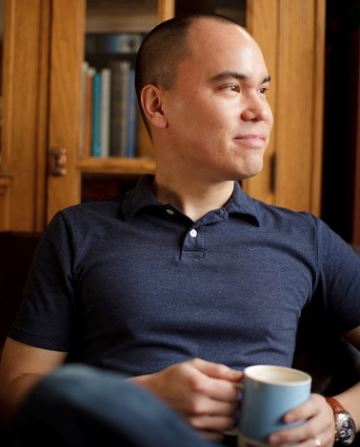
Rogers, who was an electrical engineer, amounted to another vote within the group for the cybernetic approach, which Hubbard doesn’t seem to have found particularly interesting. Apart from his work in Bay Head, New Jersey, Rogers’s primary contribution was a pair of appendices, “Mind Schematic” and “Analyzer Schematic,” in the first edition of Dianetics. Both are full of cybernetic jargon — Rogers refers to feedback loops, switchboards, and circuit pathways of signals in the brain — and his diagrams closely resemble the flow charts of feedback systems that appear in Wiener’s book. (Rogers writes of the first illustration: “It may be likened to the schematic diagram of an electrical circuit.” And you can see his influence in the main text by Hubbard, which includes the line: “An electronics engineer can set up demons in a radio circuit to his heart’s content.”) Hubbard tolerated Campbell and Rogers’s contributions as long as they seemed necessary to appeal to their intended audience, but even in Dianetics itself, he says: “The concept of the electronic brain was not vital but only useful to dianetics and it could be swept away as well — dianetics would still stand.” And he was right. The cybernetic angle wasn’t an integral part of the theory, but a form of branding, and as soon as Campbell and Rogers were out of the picture — and Hubbard had given up trying to sell his work to the academic establishment — he would remove nearly all of it.
Here is an illustration from Wiener’s Cybernetics, and the second is an illustration from Rogers’s appendices to Dianetics.
For more from Alec on Hubbard and Dianetics, make sure to visit his blog.
Chris Shelton: The first letter from Don Rogers certainly leaves you feeling a bit like this guy is a Hubbard apologist, but given the fact that he was literally there on the ground before Day One of Dianetics and actually helped develop it, I don’t think it’s a good idea to just write him off as “deluded” or ignorant. He also doesn’t appear to even be aware of the atrocities that occurred in the Sea Organization and the nonsense that group got up to, so his experience with Hubbard was more based on the early Dianetics days when individual contributions and ideas were being thrown around a mile a minute and Hubbard was noting it all down for later use and re-working under his own name, or much later when Rogers got reaquainted with the topic but again didn’t dive too deep down the rabbit hole. Rogers was not even aware of Hubbard kidnapping his daughter Alexis, yet this was a story that made it into multiple newspapers at the time and went on for months.
I think it’s interesting that Rogers claims a couple of times that Hubbard had eidetic recall. There is no evidence I’m aware of that such a claim would be true and plenty of evidence that it’s not, given Hubbard’s incredibly bad recall of events he was part of, as well as historical events he read about, not to mention the zingers and balderdash he would invent out of whole cloth and insert into his recollections. Rogers’ own recollections – where Hubbard was mis-assigning the testing of pantothenic acid to what Rogers was doing when he wasn’t the one doing that – should alone have indicated to Rogers that Hubbard’s memory wasn’t as spot on as he claimed. Same with that nonsense about Rogers converting to Christianity because of auditing.
The fact that Rogers uses this to justify Hubbard “didn’t need a notebook or case records” tells me a lot more about Rogers’ rather loose ideas of how actual science works more than it tells me about Hubbard. I understand his point that in engineering you might take a more robust, “let’s try this and let’s try that” approach, but that’s not how science works. You certainly would never under any circumstances simply take someone’s word for it when it comes to what methods were being used and what their results were. Rogers is an odd bird in that he alternately rationalizes and then ridicules the way Hubbard did his “research.”
The most interesting reveal in these letters though, is that Rogers says that Dianetics technique was basically just straight hypnosis in 1949 (“we were using light trance hypnosis techniques, complete with counting down and cancelers.”) It’s not clear in any biography or information I’ve read where exactly Hubbard learned how to hypnotize people, but it’s been verified in multiple accounts by others (as well as Hubbard’s own numerous stories on the subject) that he was quite good at it. This is not an unimportant or minor detail. He had Rogers, Campbell, Winter and the whole gang convinced that he had developed some kind of super psychoanalysis, yet what he was really doing was hypnotizing them. Hubbard’s lectures also indicated that he was not only knowledgeable about the power of post-hypnotic suggestions (even installing them when a person is sleeping) but that he had no real moral qualms with using them. I have no doubt Hubbard was not above implanting some clever post-hypnotic suggestions which would “help” these folks “realize” how great Dianetics was. It’s just conjecture on my part, of course, but all the elements are there and these are not dots that are very difficult to connect.
I also think it’s fascinating that Joe Winter was not only a doctor, but that he specialized in endocrines. Hubbard made a lot of hay about how he had spent the better part of his supposed year at Oak Knoll Hospital while recuperating from his non-existent war wounds studying endocrinology, the nervous system, and experimenting with “early Dianetic techniques” on other patients there. I now wonder if any of that had even a grain of truth in it. More likely, Hubbard made up the entire story of his Oak Knoll research and instead just parroted what he learned from Winter about endocrinology when he related his “researches” to his Dianetics/Scientology audiences.
You can see the trading and borrowing of ideas in 1950 with the vitamins, GUK bomb and other chemicals used to try to enhance or speed up auditing. I think Rogers was right that Hubbard became leery of continuing this because the AMA was very much on his trail for practicing medicine without a license (which is what Hubbard really was doing) and this kind of thing would just give them more fodder for their cannons.
Rogers also confirms what I’ve been saying in my videos about how Hubbard was the one personally responsible for bankrupting the early Dianetics organizations because he (a) couldn’t organize his own way out of a wet paper bag much less administer those early groups, and (b) he would just go in and take whatever amount of money he wanted from their bank accounts, randomly hire and fire whoever he favored or disliked, not pay the bills he himself was wracking up and generally mucked about messing up the hard work of people who actually believed in what he was doing. He also had to contend with people making power plays of their own, which only served to justify his own irascibility and paranoia, and the confusion this generated.
On a personal level much of what Rogers says here makes me kind of sad because so much of this is an exercise in cognitive dissonance. Rogers praises Hubbard’s techniques and ideas, while the information you need to see right through Hubbard’s shenanigans is right there too. For example, Rogers claims that he would dutifully run “an awful lot of fake prenatals to keep the world happy and to fulfill my tacit agreement to be a good preclear in order to enter the glorious world of clear.” If you want a statement of the reality bending that Scientologists to this day engage in, that would do it. In the end, Rogers was just another victim of Hubbard’s woo and pseudoscience and despite his education and background, he fell for it. The fact that he could be somewhat critical of Hubbard and his techniques is good and all, but he seemed to lack enough objective sense to step away and stay away. I suppose given how invested he was in the processes and his contributions to it, he wasn’t willing to see the error of his ways.
Thank you, Chris. And hey, today is Thursday, so here’s Chris’s new video of the week…
Says Chris: “This week, I produced a short video directed to people who are just newly stepping out of Scientology and wondering what to do next. This would also be applicable for people coming out of pretty much any destructive cult, but obviously it’s tailored to Scientologists and I even threw in some of the lingo. I chose my words carefully in putting this together and I hope people can see why some of what I say here might seem controversial given my stance on the ‘workability’ of Scientology. To people newly coming out, they don’t need to be hit over the head with how bad it all is. They’ll get there eventually.”
And in case you missed it earlier this week, your proprietor appeared at his favorite radio station, KCRW in Santa Monica, California, and we enjoyed being on a segment with reporter Madeleine Brand to talk about the new Scientology TV network…
——————–
Bonus items from our tipsters
Rod Keller tells us that Miscavige has made it official. Get ready, Orlando!
——————–
Make your plans now!
HOWDYCON UPDATE
Wow, we’re now less than two months out, and Chee Chalker is working hard to make sure things are going to run smoothly at this year’s HowdyCon in Chicago, June 21-23. As in past years, we’re looking forward to meeting readers of the Bunker, culminating in Saturday night’s main event.
The biggest difference this year is that our Saturday night event is separate from that evening’s dinner. Chee is setting up an inexpensive pizza dinner that you don’t need to pay for ahead of time, after which we’ll walk over to the theater where our event, hosted by Chicago Fire star Christian Stolte, will take place. Because it’s a separate event, we’re asking that you pay $10 each to get into the Saturday night event, which will help us recoup what the Bunker paid for the venue. (We have never made a penny on our HowdyCon meetups, we only try to break even.)
Please email your proprietor (tonyo94 AT gmail) in order to reserve your spot for Saturday night’s main event. Seating is limited, and we’re going to have some really interesting people on stage and they may make a few announcements that you don’t want to miss.
——————–
Bernie Headley has not seen his daughter Stephanie in 5,110 days.
Katrina Reyes has not seen her mother Yelena in 1,713 days
Brian Sheen has not seen his grandson Leo in 256 days.
Clarissa Adams has not seen her parents Walter and Irmin Huber in 1,319 days.
Carol Nyburg has not seen her daughter Nancy in 2,093 days.
Jamie Sorrentini Lugli has not seen her father Irving in 2,867 days.
Quailynn McDaniel has not seen her brother Sean in 2,213 days.
Claudio and Renata Lugli have not seen their son Flavio in 2,707 days.
Sara Goldberg has not seen her daughter Ashley in 1,747 days.
Lori Hodgson has not seen her son Jeremy and daughter Jessica in 1,459 days.
Marie Bilheimer has not seen her mother June in 985 days.
Joe Reaiche has not seen his daughter Alanna Masterson in 5,074 days
Derek Bloch has not seen his father Darren in 2,214 days.
Cindy Plahuta has not seen her daughter Kara in 2,534 days.
Claire Headley has not seen her mother Gen in 2,509 days.
Ramana Dienes-Browning has not seen her mother Jancis in 865 days.
Mike Rinder has not seen his son Benjamin and daughter Taryn in 5,167 days.
Brian Sheen has not seen his daughter Spring in 1,273 days.
Skip Young has not seen his daughters Megan and Alexis in 1,676 days.
Mary Kahn has not seen her son Sammy in 1,548 days.
Lois Reisdorf has not seen her son Craig in 1,130 days.
Phil and Willie Jones have not seen their son Mike and daughter Emily in 1,635 days.
Mary Jane Sterne has not seen her daughter Samantha in 1,879 days.
Kate Bornstein has not seen her daughter Jessica in 12,988 days.
——————–
 Posted by Tony Ortega on May 10, 2018 at 07:00
Posted by Tony Ortega on May 10, 2018 at 07:00
E-mail tips and story ideas to tonyo94 AT gmail DOT com or follow us on Twitter. We post behind-the-scenes updates at our Facebook author page. After every new story we send out an alert to our e-mail list and our FB page.
Our book, The Unbreakable Miss Lovely: How the Church of Scientology tried to destroy Paulette Cooper, is on sale at Amazon in paperback, Kindle, and audiobook versions. We’ve posted photographs of Paulette and scenes from her life at a separate location. Reader Sookie put together a complete index. More information can also be found at the book’s dedicated page.
The Best of the Underground Bunker, 1995-2017 Just starting out here? We’ve picked out the most important stories we’ve covered here at the Undergound Bunker (2012-2017), The Village Voice (2008-2012), New Times Los Angeles (1999-2002) and the Phoenix New Times (1995-1999)
Learn about Scientology with our numerous series with experts…
BLOGGING DIANETICS: We read Scientology’s founding text cover to cover with the help of L.A. attorney and former church member Vance Woodward
UP THE BRIDGE: Claire Headley and Bruce Hines train us as Scientologists
GETTING OUR ETHICS IN: Jefferson Hawkins explains Scientology’s system of justice
SCIENTOLOGY MYTHBUSTING: Historian Jon Atack discusses key Scientology concepts
Other links: Shelly Miscavige, ten years gone | The Lisa McPherson story told in real time | The Cathriona White stories | The Leah Remini ‘Knowledge Reports’ | Hear audio of a Scientology excommunication | Scientology’s little day care of horrors | Whatever happened to Steve Fishman? | Felony charges for Scientology’s drug rehab scam | Why Scientology digs bomb-proof vaults in the desert | PZ Myers reads L. Ron Hubbard’s “A History of Man” | Scientology’s Master Spies | The mystery of the richest Scientologist and his wayward sons | Scientology’s shocking mistreatment of the mentally ill | The Underground Bunker’s Official Theme Song | The Underground Bunker FAQ
Our non-Scientology stories: Robert Burnham Jr., the man who inscribed the universe | Notorious alt-right inspiration Kevin MacDonald and his theories about Jewish DNA | The selling of the “Phoenix Lights” | Astronomer Harlow Shapley‘s FBI file | Sex, spies, and local TV news





